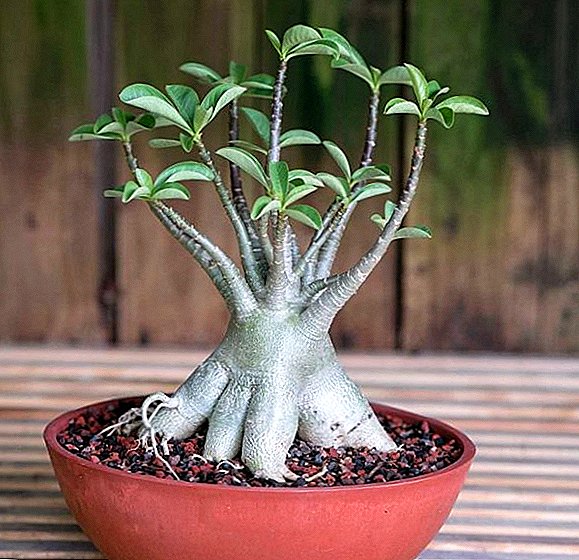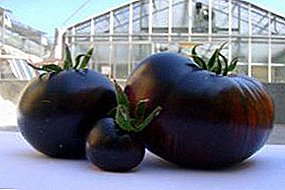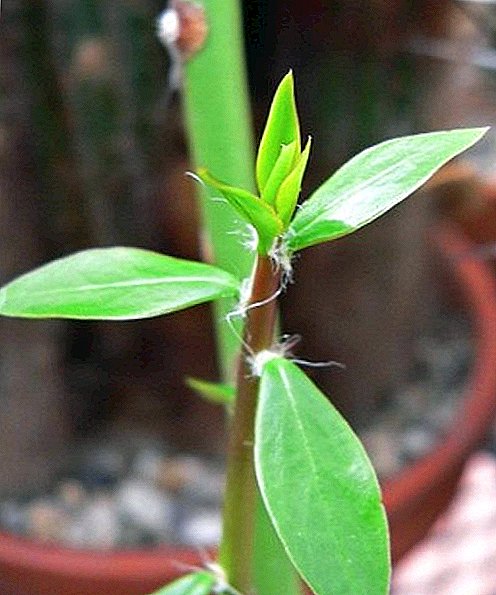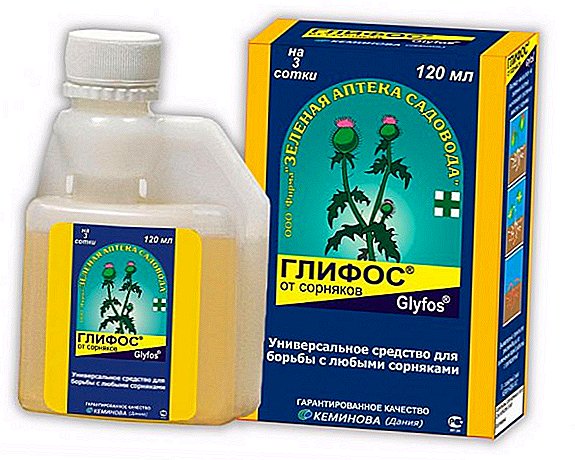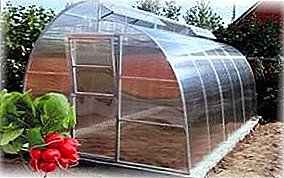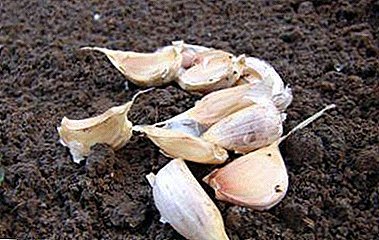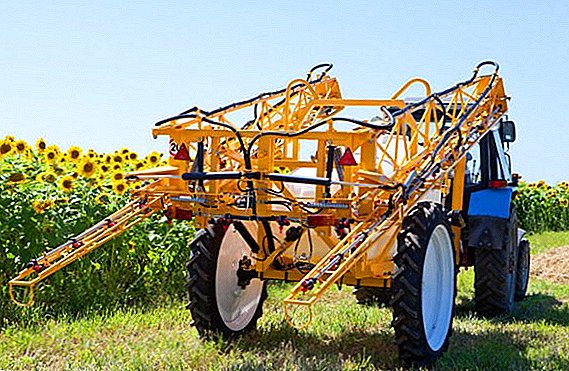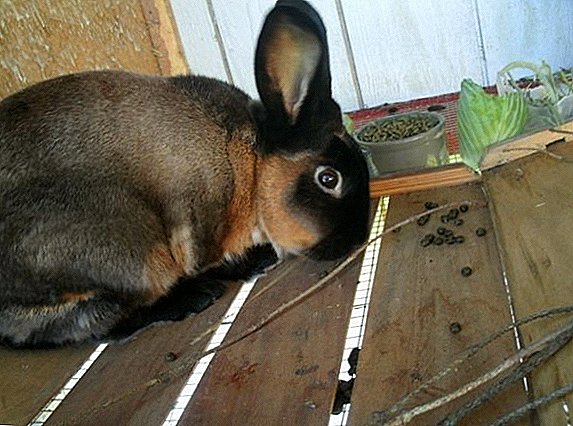 Independent housing for rabbits has become the norm for many rabbit breeders. After all, why spend money on ready-made cells, if they are easy to do with your own hands. One of the main stages of such work is the creation of the bottom of a mini-room. And the floor of the cell should be as convenient as possible for its inhabitants. Let's look at several options for this element and see how to make it.
Independent housing for rabbits has become the norm for many rabbit breeders. After all, why spend money on ready-made cells, if they are easy to do with your own hands. One of the main stages of such work is the creation of the bottom of a mini-room. And the floor of the cell should be as convenient as possible for its inhabitants. Let's look at several options for this element and see how to make it.
What kind of cage sex is best for rabbits?
Today, rabbit breeders use a variety of materials when arranging rabbitry, so it is not surprising that metal mesh and wooden slatted floors are distinguished from popular types of bottoms.
Slightly less common are structures made of flat slate, OSB, perforated steel sheets, and plastic surfaces. Of course, each of these options has its advantages and disadvantages, information about which will be very useful when choosing. Let's get acquainted with them in more detail.
Learn how to make rabbitry, cages for rabbits according to the method of Zolotukhin, sheds for rabbits, mother liquor.
Reticulate
The mesh floor in the rabbitry at one time became a good alternative to wooden surfaces. Usually it is made from a metal stamped mesh - but not a chain-link, since the latter causes unpleasant sensations in animals (pinch the hairs on the legs).  The main advantages of mesh floors include the following:
The main advantages of mesh floors include the following:
- durability of the material;
- almost instant removal of all excrement, which has a positive effect on the eared health;
- additional ventilation in the summer (rabbits sweat through the pads on the legs);
- accessibility of the mesh material and reduction of the final cost of all cells.
Important! In order to minimize the possible risk of damage to the paws, a portion of the mesh floor in the cage can be covered with a sheet of plywood on which the animal could rest. Such a removable cover, if necessary, can be easily cleaned, so there is no need to worry about hygiene.
Wooden slatted floor
Many rabbit breeders consider wooden slatted floors to be more comfortable for animals, although it is not so easy to maintain order in them. Today there are 2 main types of such bottoms: inserted and tilted.
Plug-in
Plug-in, that is, removable floors, of course, can be called a much more profitable and convenient solution than stationary. With complete disinfection of cells or another small cleaning, they are much easier to get and clean, and even a schoolboy can cope with the construction of such a structure.  The width of the rails is usually about 4.5 cm, and the thickness of the bars varies from 3 to 4 cm. Having placed the required number of parts, you will only have to fix them together with additional bars nailed either from only two sides or along the entire perimeter. Between the slats it is necessary to leave 2-2.5 cm of free space to remove urine and excrement from the cell.
The width of the rails is usually about 4.5 cm, and the thickness of the bars varies from 3 to 4 cm. Having placed the required number of parts, you will only have to fix them together with additional bars nailed either from only two sides or along the entire perimeter. Between the slats it is necessary to leave 2-2.5 cm of free space to remove urine and excrement from the cell.
Important! So that the tree does not quickly rot, it is desirable to cover it with a special oil-wax or other similar composition (but only with a minimum level of toxicity). It is possible to place the treated inserts into the cage only after they have completely dried and ventilated.
With sloping slats
As a valid alternative to horizontal wooden slats, you can build a rabbitry floor with slats. They will be much more convenient to clean and clean up the dirt, because the movement of the scraper at an angle is much more efficient and requires much less physical effort. If the owner of rabbits is right-handed, then the slats should “go” from you in the direction to the left, while for left-handers - to the right.  The positive aspects of just such a decision include the reduction in the cost of consumables due to the possibility of using even the smallest cubes (they will take places at the corners). If we take into account the need to periodically change the plug-in floors, the savings will be more than noticeable, and with an increase in the number of cells, the money saved will only accumulate.
The positive aspects of just such a decision include the reduction in the cost of consumables due to the possibility of using even the smallest cubes (they will take places at the corners). If we take into account the need to periodically change the plug-in floors, the savings will be more than noticeable, and with an increase in the number of cells, the money saved will only accumulate.
Familiarize yourself with the main principles of rabbit hygiene.
Plastic
Relatively recently, plastic floors for the cages of various animals appeared on the markets and in specialized stores. They consist of a set of collapsible parts and can be easily adjusted to the required parameters of space, while possessing all the advantages of the previous options. Moreover, they are also high-tech in terms of cleaning, and in winter they seem much warmer than other options.  Of course, during disinfection they will not be able to be burned with a blowtorch (it is sometimes used for disinfecting grid floors), but most manufacturers assure that scalding with boiling water and the use of standard liquid antiseptics are possible.
Of course, during disinfection they will not be able to be burned with a blowtorch (it is sometimes used for disinfecting grid floors), but most manufacturers assure that scalding with boiling water and the use of standard liquid antiseptics are possible.
Important! Choosing a plastic floor for the rabbitcher, be guided by the stated indicators of strength. Despite the fact that most of these sexes successfully withstand medium and even large rabbits, animals of giant breeds can break a low-quality stand, and in the shortest possible time.
Flat slate or OSB-plates
Flat slate and OSB-plates are successfully used in cells created by the Zolotukhin technique. They are presented in the form of a multi-storey structure with solid floors that do not allow excrement, water and urine to penetrate to the lower floors. At the same time, cleaning of such rabbit houses will take much less time than in other varieties, which was achieved due to the advantageous location of the cells.  The principle of self-cleaning is based on the fact that each upstream tier stands a few centimeters above the ground floor, as if hanging over it from behind. The floors in all rooms are placed slightly at an angle, and in the place of the projecting part, nets are attached, through which the garbage and faeces are brought out (fall into the framed pallet).
The principle of self-cleaning is based on the fact that each upstream tier stands a few centimeters above the ground floor, as if hanging over it from behind. The floors in all rooms are placed slightly at an angle, and in the place of the projecting part, nets are attached, through which the garbage and faeces are brought out (fall into the framed pallet).
With this design, the rabbit cage is the most convenient material for creating the floor will be a flat slate: it is durable, rabbits will not be able to gnaw, and cleaning the surface will not take much power. Practically the only drawback of this solution is that large animals can earn natoptysh on paws, due to the constant stay on a solid surface.
Learn how to make bunker feeders and drinkers for rabbits.
A softer and more comfortable solution in this regard will be OSB-plate - a popular material obtained by pressing rectangular wooden chips under high pressure. In many respects, it surpasses plywood and standard boards, in particular, perfectly holds nails or screws.  When choosing osb-plates, be guided by the type of OSB-3, it has a good moisture and durability. The advantages of OSB plates for the construction of rabbit cages should include:
When choosing osb-plates, be guided by the type of OSB-3, it has a good moisture and durability. The advantages of OSB plates for the construction of rabbit cages should include:
- high level of moisture resistance (you yourself can choose a material with the most favorable indicators, for example, OSB-3);
- maintaining the strength of the floor for a long time of operation;
- affordable cost (cheaper than quality boards);
- ease of use (you can create almost anything from them, since OSB plates are easily cut and joined together and with other materials).
Did you know? Rabbit feces are considered valuable fertilizer for plants, as they contain one and a half times more nitrogen and potassium than other natural fertilizers. And in addition to this, it is worth noting the impossibility of spreading weed plant seeds, since they simply do not exist in eared feces.
Perforated stainless steel sheets or rolls
Much less often than the rest of the presented materials, perforated stainless steel sheets are used, or rolls of perforated strip of the same stainless steel. True, it is important that the size of the available holes fully comply with the requirements of the rabbit breeding, ensuring the possibility of free passage of debris and excrement.  Perforated floor for rabbits in the purchased rabbitry One of the suitable options would be holes with a cross section of 1.5 cm, although even in this case, large particles often lump together and get stuck, thereby only complicating the cleaning process.
Perforated floor for rabbits in the purchased rabbitry One of the suitable options would be holes with a cross section of 1.5 cm, although even in this case, large particles often lump together and get stuck, thereby only complicating the cleaning process.
Did you know? Rabbits seldom give birth even to 20 rabbits, but the largest officially recorded offspring is 24 rabbits.
The advantages of using these materials for the construction of the floor are as follows:
- long service life (stainless steel is highly resistant to even the most aggressive environments of the rabbit: urine, roasting and disinfectants);
- installation speed of cells (you just need to measure the appropriate length of the strip in a roll, and then nail or fasten it to the frame base);
- ease of material replacement (when the used segment is a little worn out, it can be easily replaced with a new one).
 Homemade perforated floor for rabbits Unfortunately, the cost of such material can not be called affordable, especially if you need to equip a large number of cells. In addition, in the cold winter time to warm up on such floors is very difficult, and this violates the comfort and even the health of rabbits. Rabbits such a coating and does not fit: hitting his foot into the hole in the sheet, they can damage their limbs.
Homemade perforated floor for rabbits Unfortunately, the cost of such material can not be called affordable, especially if you need to equip a large number of cells. In addition, in the cold winter time to warm up on such floors is very difficult, and this violates the comfort and even the health of rabbits. Rabbits such a coating and does not fit: hitting his foot into the hole in the sheet, they can damage their limbs.Find out what grass can poison rabbits, whether it is possible for them mugs, wormwood, nettles, bran, cereals, bread.
How to make a net floor for rabbits with your own hands
If for some reason you don’t want to mess with wood or slate, then the grid will be the ideal solution for arranging the floor in the rabbitry bone. It is easy to implement this venture, the main thing is to design everything correctly, to prepare the necessary tools and materials.
Design and Drawings
When calculating the necessary parameters of the floor will have to take into account the size of the whole structure, which, in turn, depends on the characteristics of future residents. Based on this, all values can be divided into several groups:
- for nursing females suitable dimensions of the bottom in the cage will be 1.1-1.8 × 1 m, with a building height of at least 60-70 cm;
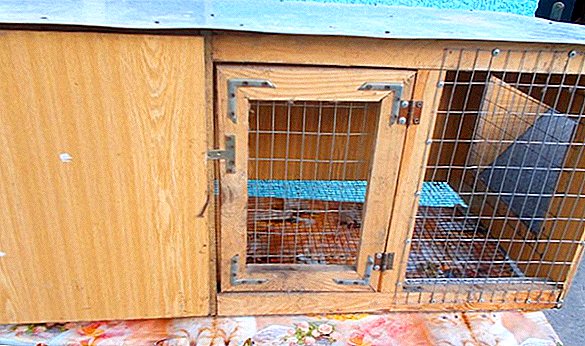 Mother cell
Mother cell - for large animalsweighing more than 5 kg, you also need a lot of space, so the floor should be at least 1.3-1.5 m long and 70-80 cm deep into the cage, with a front wall height of 40-50 cm;
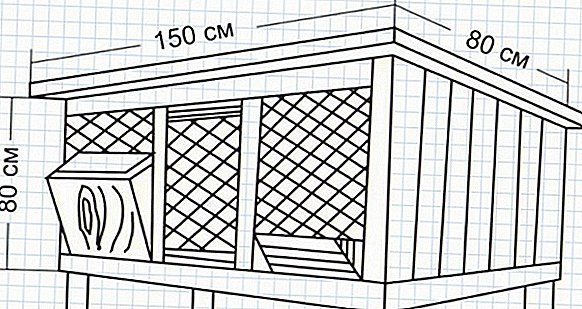 Cage for large rabbits
Cage for large rabbits - young individuals usually placed in cages for group housing (approximately 10-20 young rabbits in each), but the living area for young individuals should not be less than a value of 0.25 square meters. m space;
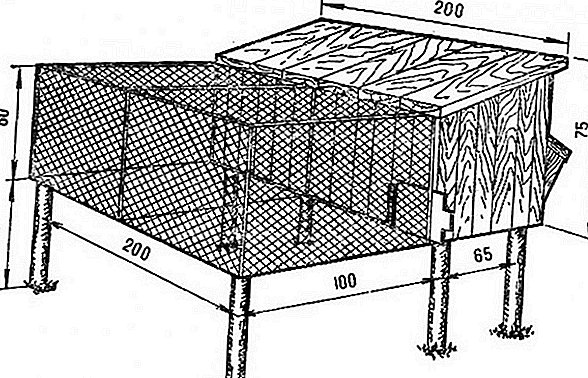 Cage for young
Cage for young - for adult rabbits individual cages will fit with a floor size of about 100 × 60 cm, and if the rabbit area allows, this value can be further increased by 20-30% (limited mobility of males can cause their infertility);
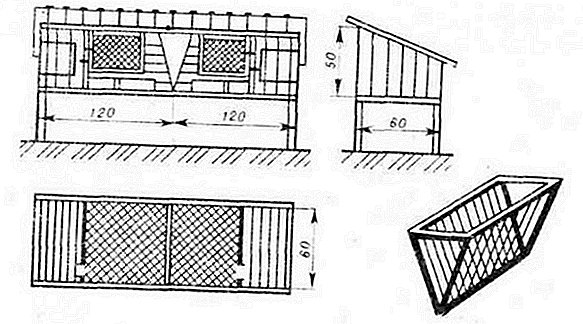 Adult Rabbit Cage
Adult Rabbit Cage - in the construction of shed structures The length and width of the floor can be 200 × 100 cm, with partitions inside (in this case, it is necessary to install a litter tray on the roof of the previous tier).
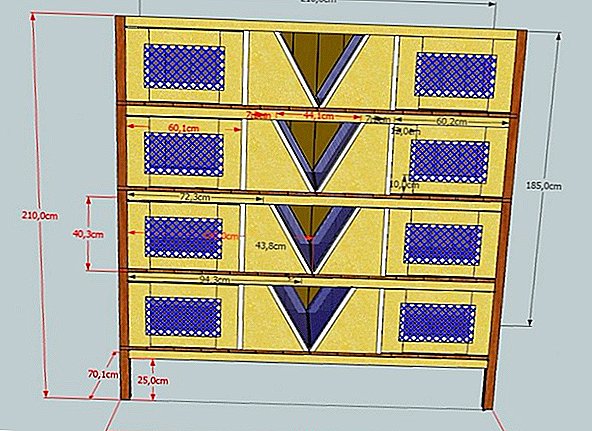 Shed for rabbits
Shed for rabbits
Selecting a suitable grid for the floor
A lot of various grids are presented in the building stores, but not all of them can become an excellent basis for a rabbit cage. It must necessarily be durable and at the same time convenient to operate the product, which will not give the animal any discomfort.
Find out why rabbits have watery eyes, hair falls out, itching, sneezing.
Galvanized metal mesh
Based on the reviews of many rabbit breeders, a suitable option would be a galvanized metal mesh, the main advantage of which is considered a high level of durability, not typical of many other varieties. Due to galvanization of such a floor for the cell will not be afraid of corrosion and rust. On top of that, because of the small size of the cells, the rabbits will not be able to gnaw the bottom, and the movement on the grid will not cause them any inconvenience.  As for the specific type of galvanized mesh, you can turn your attention to the hot-dip galvanized metal welded product (it is not difficult to determine it by the available sagging on the welds). Due to the thickest zinc layer, the mesh base is reliably protected from rust.
As for the specific type of galvanized mesh, you can turn your attention to the hot-dip galvanized metal welded product (it is not difficult to determine it by the available sagging on the welds). Due to the thickest zinc layer, the mesh base is reliably protected from rust.
Important! When assessing suitable cell sizes, do not forget about the need to remove feces and debris from the cell, so too small cells will be inappropriate.
Cell Size (Diameter)
On average, mesh materials with a mesh size of about 1.5-2 cm are suitable for organizing the floor in a rabbit cage. These may be rectangular or square holes, but it is better to prefer the latter. They make the net more stable, and it will not sag under the weight of rabbits. When breeding large breeds or giant rabbits, the cells in the mesh floors can have dimensions of 2.5 × 2.5 cm, since the massive paws of animals are unlikely to fall into them.  It is desirable to immediately pay attention to the geometric features of the cells of the selected grid. If the "planochki" are crookedly planted, some welding areas are poorly interconnected, there are well visible delaminations, and the rods seem very thin (less than 2 mm), then such a grid can be considered defective and you just waste money. Moreover, it will not only bend, forming holes, but also increase the likelihood of injuries to rabbits, which also will not benefit the animals.
It is desirable to immediately pay attention to the geometric features of the cells of the selected grid. If the "planochki" are crookedly planted, some welding areas are poorly interconnected, there are well visible delaminations, and the rods seem very thin (less than 2 mm), then such a grid can be considered defective and you just waste money. Moreover, it will not only bend, forming holes, but also increase the likelihood of injuries to rabbits, which also will not benefit the animals.
Find out if you can keep chickens and rabbits together.
What other materials will be needed
In addition to the floor grid itself, you will also need other materials, so the full list will look something like this:
- wooden bars for the frame section of 50 × 50 cm;
- metal corners for better fastening of wooden bars;
- sheets of RSD or other similar material (if only a partial grid installation is planned on the floor);
- self-tapping screws for fastening of a grid to the basis.
 Metal corners for fixing timber In the process, each master can add to this list and other materials at their discretion. It all depends on creativity and personal preferences, but the basic set looks like this.
Metal corners for fixing timber In the process, each master can add to this list and other materials at their discretion. It all depends on creativity and personal preferences, but the basic set looks like this.What tools are needed for work
For the manufacture of the mesh floor you do not need any very complex tools - a standard set of wizard will do:
- metal shears for cutting the mesh;
- screwdriver;
- drill with a small drill bit (it will ease the work if you prepare metal corners that are too thick);
- hammer.
Manufacturing steps
Having prepared everything you need, you can proceed to the process of creating a mesh floor.
The sequence of actions in this case is as follows:
- According to the prepared schemes, cut the wooden bars and use the corners to create a frame from them (it will continue to be laid on the main part of the cage).
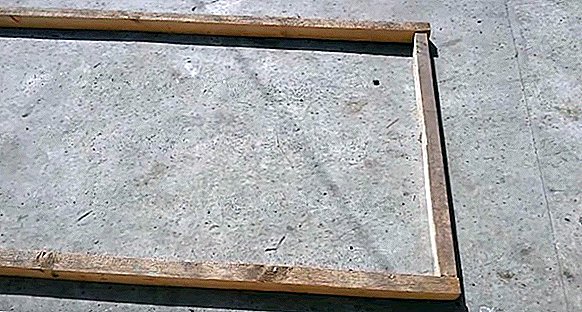
- Based on the size of the frame, cut the appropriate part of the grid, calculating the right amount so that the resulting segment is enough for the entire upper side of the bar.
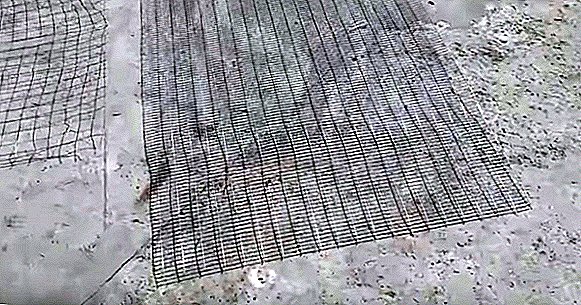
- Lay the frame on a flat surface and, having fixed it well, lay the net on top.
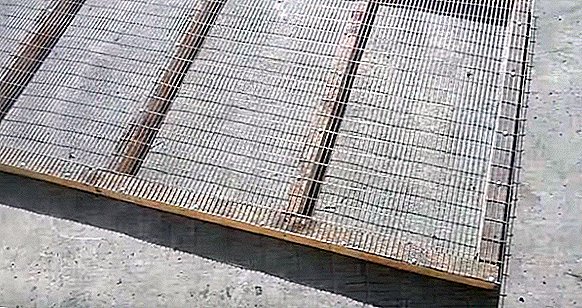
- Align it in all corners, secure one edge with self-tapping screws.
- Stretch the mesh cover as far as possible and screw it in another part of the wooden frame.
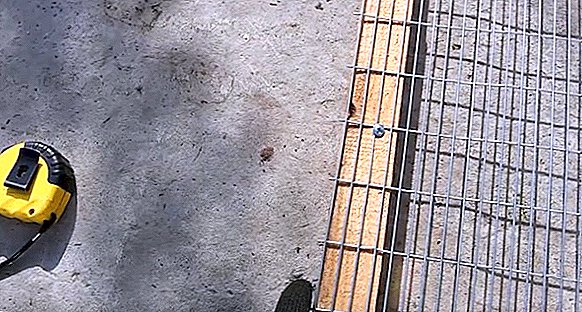
- Fix the two remaining sides of the grid in the same way.
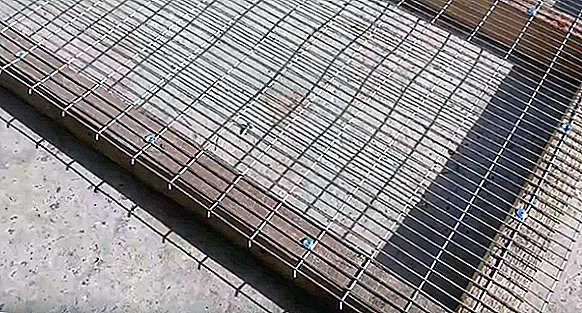
- Hammer along the perimeter for a snug fit to the bars.
- Check the floor for sharp corners and protruding ends of the wire that could cut the animal (the protruding wire must be cut with metal scissors and bent).
- Fit the covered frame on the cage frame and attach to the racks.
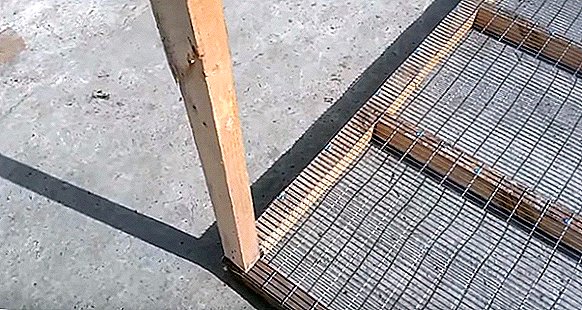
Important! Under load, the grid should not spring back, let alone sag. It will be inconvenient for rabbits to move along such a bottom, and over time it may even fail, especially if you grow giant breeds.
As you can see, it is impossible to say that making a mesh floor in the rabbitry is a very difficult task, but still, certain knowledge is required here. Having correctly calculated the required bottom size, and choosing the right material for its manufacture is already half the battle, and collecting a structure, especially according to the above instructions, will not take a lot of time.
Rabbit House: video
Which floor is better in rabbitry: reviews
So, remember the motto of the old Jew: we are not so rich to pay twice.
Calculate the cost of a normal grid and make sure that the wooden floor, even if his craws will be eaten in a year, is more profitable than the grid.


By the way, the advice is from personal experience, the grid should be of such a size that the legs would not fall there, otherwise the risk of injury would be great, and the size of the cage should be such that the rabbit could move easily. In my overcrowding the main enemy of the rabbit breeder Well, be sure to quarantine. We even have quarantine cells in a separate small barn, where firewood lies.
If you make them on a wooden frame, it is also very practical and convenient, later I will post a photo ...



 Mother cell
Mother cell Cage for large rabbits
Cage for large rabbits Cage for young
Cage for young Adult Rabbit Cage
Adult Rabbit Cage Shed for rabbits
Shed for rabbits





